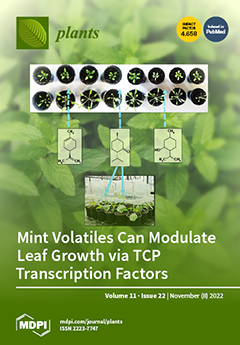The
Staphylococcus aureus SsbA protein (SaSsbA) is a single-stranded DNA-binding protein (SSB) that is categorically required for DNA replication and cell survival, and it is thus an attractive target for potential antipathogen chemotherapy. In this study, we prepared the stem extract of
Sarracenia purpurea obtained from 100% acetone to investigate its inhibitory effect against SaSsbA. In addition, the cytotoxic effects of this extract on the survival, apoptosis, proliferation, and migration of B16F10 melanoma cells were also examined. Initially, myricetin, quercetin, kaempferol, dihydroquercetin, dihydrokaempferol, rutin, catechin, β-amyrin, oridonin, thioflavin T, primuline, and thioflavin S were used as possible inhibitors against SaSsbA. Of these compounds, dihydrokaempferol and oridonin were capable of inhibiting the ssDNA-binding activity of SaSsbA with respective IC
50 values of 750 ± 62 and 2607 ± 242 μM. Given the poor inhibition abilities of dihydrokaempferol and oridonin, we screened the extracts of
S. purpurea,
Nepenthes miranda, and
Plinia cauliflora for SaSsbA inhibitors. The stem extract of
S. purpurea exhibited high anti-SaSsbA activity, with an IC
50 value of 4.0 ± 0.3 μg/mL. The most abundant compounds in the stem extract of
S. purpurea were identified using gas chromatography–mass spectrometry. The top five most abundant contents in this extract were driman-8,11-diol, deoxysericealactone, stigmast-5-en-3-ol, apocynin, and α-amyrin. Using the MOE-Dock tool, the binding modes of these compounds, as well as dihydrokaempferol and oridonin, to SaSsbA were elucidated, and their binding energies were also calculated. Based on the S scores, the binding capacity of these compounds was in the following order: deoxysericealactone > dihydrokaempferol > apocynin > driman-8,11-diol > stigmast-5-en-3-ol > oridonin > α-amyrin. Incubation of B16F10 cells with the stem extract of
S. purpurea at a concentration of 100 μg/mL caused deaths at the rate of 76%, reduced migration by 95%, suppressed proliferation and colony formation by 99%, and induced apoptosis, which was observed in 96% of the B16F10 cells. Overall, the collective data in this study indicate the pharmacological potential of the stem extract of
S. purpurea for further medical applications.
Full article






